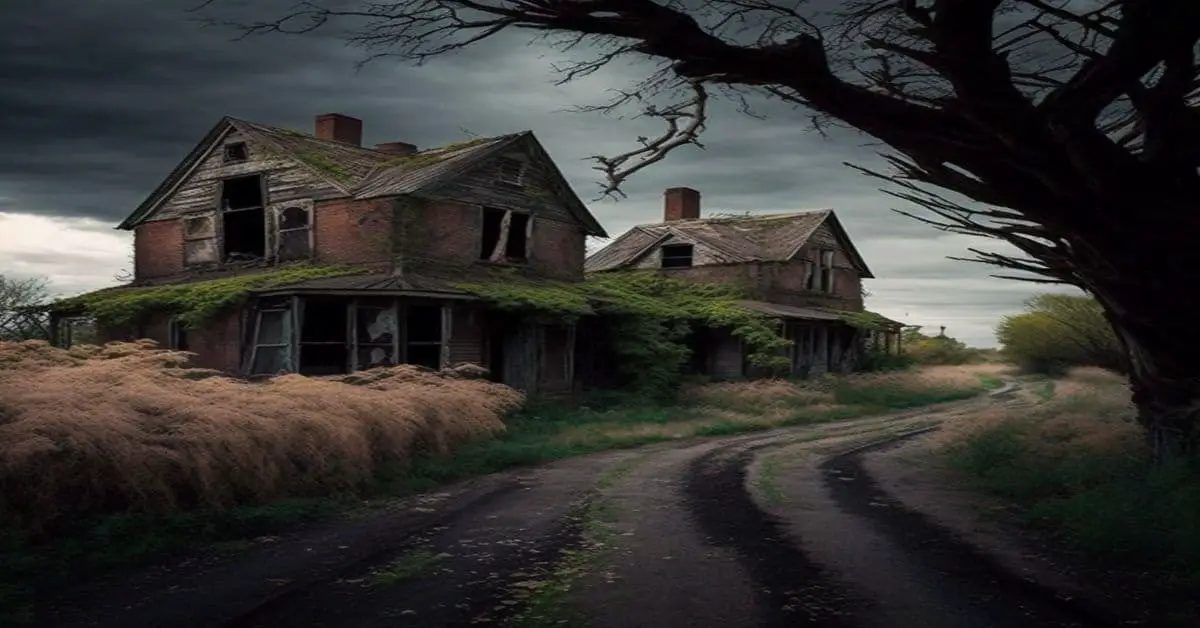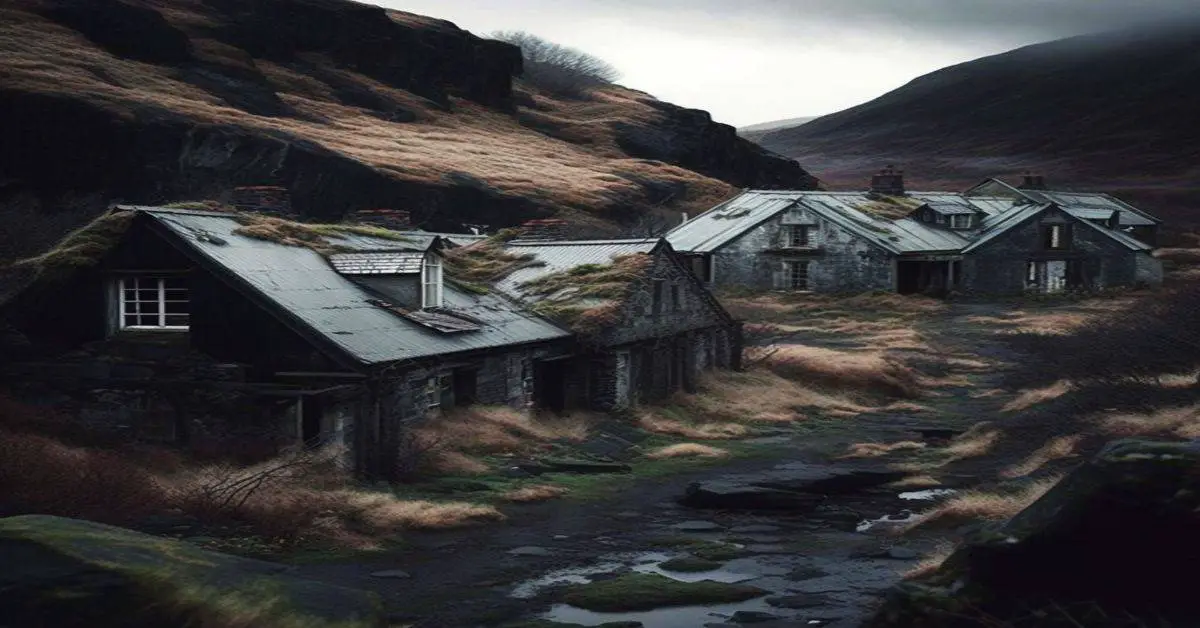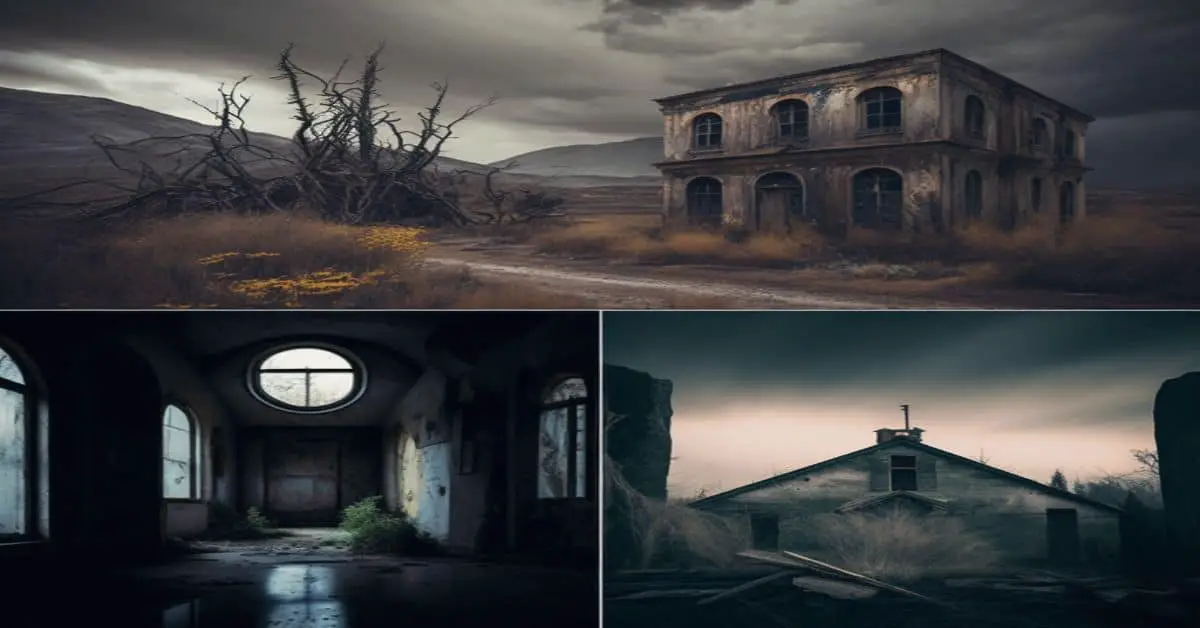Brunswick Town, NC
County: Brunswick
Zip Code:
Latitude / Longitude: 34° 2′ 23.36 N, 77° 56′ 47.69 W
Elevation:
Time Zone: Eastern (EST) (UTC-5)
Established:
Disestablished:
Comments: Brunswick Town is a colonial ghost town located beside the Cape Fear River, Brunswick County, North Carolina, United States. It was the first successful settlement in the Cape Fear region, a major North Carolina port in the 18th century, and home to two colonial governors. Brunswick Town lasted 50 years (1726–76) until it was raided by the British Army during the American Revolutionary War and never rebuilt.
Remains: During the American Civil War, 86 years after the town was abandoned, a large portion of the town was covered by earthworks for the construction of Fort Anderson.
Current Status: Brunswick Town became an excavation site for Cape Fear history during the 20th century. The Brunswick Town Historic District contains the ruins of 18th-century commercial and residential colonial homes, the St. Philip’s Church Ruins, Fort Anderson, and Russellborough, the former governor’s mansion. The town’s historic district and St. Philip’s Church are listed on the National Register of Historic Places. Brunswick Town is also one of the settings in which the Sleepy Hollow television series has been filmed.
Remarks: With the combination of Wilmington’s continued growth and Tryon moving to his new residence, Tryon Palace in New Bern, Brunswick Town continued to decline.
Buffalo City, NC
County: Dare
Zip Code:
Latitude / Longitude: 35° 50′ 33 N, 75° 55′ 2 W
Elevation:
Time Zone: Eastern (EST) (UTC-5)
Established: 1870s
Disestablished: 1950s
Comments: Buffalo City was a logging and moonshine town in East Lake Township, Dare County, North Carolina, United States. It was on the mainland, 19 miles (31 km) west of Manteo near present-day Manns Harbor. The marshy land where Buffalo City once stood, near U.S. 64, is now part of the Alligator River National Wildlife Refuge.
Remains: The town’s history lasted approximately 80 years from the 1870s to 1950s, but at one time Buffalo City’s population of 3,000 in the early 20th century made it the largest community in Dare County. A hotel, post office, schoolhouse, general store, 100 miles (160 km) of railroad track and rows of homes once stood on the now-abandoned area.
Current Status: Today, the only remnants of the ghost town include a road sign, rusted rails, and building debris now overgrown with weeds.
Remarks: Founded shortly after the Civil War by the Buffalo Timber Company, Buffalo City was constructed on the north side of Milltail Creek by African-American laborers and more than 200 Russian immigrants. Many of these immigrants stayed and worked at the new logging town and composed half of the town’s population. The area surrounding Milltail Creek was harvested for juniper, cypress, and pine trees and became the largest logging operation in Northeastern North Carolina.
Cataloochee, NC
County:
Zip Code:
Latitude / Longitude: 35° 38′ 22.99 N, 83° 4′ 54.98 W
Elevation:
Time Zone: Eastern (EST) (UTC-5)
Established:
Disestablished:
Comments: Cataloochee is a valley in the Great Smoky Mountains of North Carolina, located in the Southeastern United States. Now a recreational and historic area within the Great Smoky Mountains National Park, Cataloochee was once home to a substantial Appalachian community and Cherokee hunting ground.
Remains: Since the early 19th century, Euro-Americans were using the grassy balds along the ridges surrounding Cataloochee to free-range livestock. Crude temporary herding camps were in place by 1814, when Henry Colwell made the first land purchase. In 1834, Henry’s son, James Colwell (1797–1867) moved the family to Cataloochee. The spelling of “Colwell” was eventually changed to “Caldwell.” The Caldwells were accompanied by the family of Young Bennett. Both families settled near the heart of Big Cataloochee, where their descendants would remain until the government forced them out in the 1930s.
Current Status: For anthropological and historical purposes, the National Park Service has preserved several structures dating to Cataloochee’s pre-park days. Unlike other historical areas of the park such as Cades Cove and the Mountain Farm Museum at Oconaluftee, many of the structures in Cataloochee have a more modern look, and are more representative of life in the early 20th century as opposed to pioneer life in Appalachia. Notable exceptions are the Cook Cabin and Hannah Cabin.
Remarks: George Palmer arrived in Cataloochee in 1838 and settled at the eastern end of Big Cataloochee. Family tradition recalls that Palmer had lost a fortune drinking and gambling in Waynesville and decided to move to Cataloochee to make a fresh start. Like the Caldwells, the Palmers would remain in the valley until the arrival of the national park. A notable late arrival in Big Cataloochee was Jonathan Woody (1812–1894), who arrived shortly after the Civil War.
Diamond City, NC
County: Carteret
Zip Code:
Latitude / Longitude: 34° 38′ 42 N, 76° 32′ 27.6 W
Elevation:
Time Zone: Eastern (EST) (UTC-5)
Established:
Disestablished:
Comments: Diamond City was a settlement on the eastern end of Shackleford Banks, in Carteret County, North Carolina.
Remains: Due to the San Ciriaco hurricane that struck in August 1899, the approximately 500 residents of the settlement and island decided to move. The last of the residents had left by 1902 and even relocated houses to nearby places such as Harkers Island, Salter Path, and Morehead City.
Current Status: There are no bridges from the mainland to the site where Diamond City was located or any other part of the Cape Lookout National Seashore. Visitors must ride a private boat or a passenger ferry to reach the undeveloped Shackleford Banks site.
Remarks: Shackleford Banks is the westernmost island of the Cape Lookout National Seashore, which extends 56 miles from Beaufort Inlet to Ocracoke Inlet.
Glenville, NC
County: Jackson
Zip Code: 28736
Latitude / Longitude: 35°10′24″ N 83°7′46″ W / 35.17333° N 83.12944° W / 35.17333
Elevation:
Time Zone: Eastern (EST) (UTC-5)
Established:
Disestablished:
Comments: Glenville was a town located in the Hamburg township of Jackson County, North Carolina. It is now a popular lakeside vacation community with many second homes that sometimes are rented around Lake Glenville, which flooded and destroyed the town.
Remains: Prior to incorporation in 1891, it was named Hamburgh and later Hamburg, from which the township gets its name. The Hamburgh post office was established there in 1856, but settlement began at least as early as 1827. It was used as a fort in case of attack from the local native Cherokee people. At the time of incorporation in 1891, it was the largest town in Jackson County, a surprising fact considering it was so small.
Current Status: The town had a private high school, the first in Jackson County, formed in 1886 and was just like Cullowhee High School, founded in 1889 and has now become Western Carolina University. It became a public institution in 1891. In 1926, a new Glenville School was built on a hill above the town, with grades 1-11, it was the main high school for that part of the county until 1975, when Blue Ridge School opened, consolidating Cashiers Elementary and Glenville School. When the lake was filled in the 1940s, the waters were brought to the edge of the campus, making the school lakeside. It was the pride of the community but deteriorated after being abandoned and was demolished around 2000 to make way for lakeside homes.
Remarks: The town managed to save its church and graveyard from the lake, and they were moved not far beyond the present shoreline, today they rest lakeside. Lake Glenville is renowned for Bass fishing, it annually casts bass fishing tournaments. Smallmouth bass lives abundantly in Lake Glenville, as well do lake trout, crappie, largemouth bass, bream, and perch breeds. Certain breeds of Catfish also live in the lake, mainly “channel cats.”
Henry River, NC
County: Burke
Zip Code:
Latitude / Longitude:
Elevation:
Time Zone: Eastern (EST) (UTC-5)
Established:
Disestablished:
Comments:
Remains: The remaining buildings are traces of the industrial heritage of the Henry Mill Village.
Current Status:
Remarks: It has been abandoned since the 1970s until the movie “The Hunger Games” was released in 2011. The Henry River Ghost town is primarily known as the location for District 12 in the Hunger Games movies and was listed on the National Register of Historic Places in 2019.
Judson, NC
County: Cumberland
Zip Code:
Latitude / Longitude: 35° 0′ 8 N, 78° 48′ 32 W
Elevation:
Time Zone: Eastern (EST) (UTC-5)
Established:
Disestablished:
Comments: Judson is an unincorporated community in Cumberland County, North Carolina, U.S.A.
Remains: Some structures can be visited when the lake is at its yearly low.
Current Status: It was submerged when the Fontana Dam was built, creating the Fontana Lake reservoir.
Remarks: Judson was a small town in Swain County, North Carolina.
Lost Cove, NC
County: Yancey
Zip Code:
Latitude / Longitude: 36° 4′ 15 N, 82° 24′ 8 W
Elevation:
Time Zone: Eastern (EST) (UTC-5)
Established:
Disestablished:
Comments: Lost Cove is a ghost town in Yancey County, North Carolina. The town was first settled by Morgan Bailey shortly before the Civil War.
Remains: The town is located in the Poplar Gorge above the Nolichucky River on the Tennessee-North Carolina border. Originally, the settlement was supported by logging, railroading, moonshine-making, and farming industries. Several factors contributed to the town’s abandonment including rough terrain, isolation, and the end of passenger railroad stops.
Current Status: Lost Cove is only accessible via hiking trails. To reach the ghost town, there are two possible routes. The first route is shorter but steeper: from the parking lot on Forest Road, you must hike 2 miles up a gravel hill. The second route is longer yet flatter: from River Road, follow the railroad tracks along the river for 3 miles until you encounter a 1-mile dirt path that will lead you into the town.
Remarks: In 1957, the last family left Lost Cove, leaving it deserted. Fires in 2007 burned most of the structures down. Today, the town is still accessible to those willing to hike. Visitors to the area come to see the cemetery, Swin Miller’s rusted Chevy still laying in a ditch, and the three houses that remain.
Mortimer, NC
County: Caldwell
Zip Code:
Latitude / Longitude: 35° 59′ 7 N, 81° 45′ 40 W
Elevation:
Time Zone: Eastern (EST) (UTC-5)
Established:
Disestablished:
Comments: Mortimer, North Carolina is a ghost town in Wilson Creek Township, Caldwell County, in the northwestern part of the state.
Remains: Once a mill town with a population of around 800, the town flooded in 1940 and was subsequently abandoned.
Current Status: Several remains are extant today, including machinery from the mill and the foundations of several buildings.
Remarks:
Portsmouth, NC
County:
Zip Code:
Latitude / Longitude: 35°4′11″N 76°3′49.64″ W / 35.06972° N 76.0637889° W / 35.06972
Elevation:
Time Zone: Eastern (EST) (UTC-5)
Established: 1753
Disestablished: 1971
Comments: Portsmouth was a fishing and shipping village located on Portsmouth Island on the Outer Banks in North Carolina. Portsmouth Island is a tidal island connected, under most conditions, to the north end of the North Core Banks, across Ocracoke Inlet from the village of Ocracoke.
Remains: The town lies in Carteret County, was established in 1753 by the North Carolina Colonial Assembly, and abandoned in 1971. Its remains are now part of the Cape Lookout National Seashore.
Current Status: Now, 21 total buildings stand, including about a dozen dwellings and a few out-buildings. These are maintained as part of the Portsmouth Village Historic District. Of these the Salter House/visitor center, the one-room school, the Methodist Church, the Life-Saving Station, Henry Pigott’s house, and the Post Office/general store are open to the public during the summer. Now, especially during the summers, people often visit the island and camp out overnight on the beach (camping is not allowed in the village). Facilities are very limited with a compost toilet near the Life-Saving Station and a restroom in the Salter house/visitors center, with no potable water, food, or electricity available.
Remarks: Ocracoke Inlet was a popular shipping lane during colonial times. Established in 1753, the town of Portsmouth functioned as a lightering port, where cargo from ocean-going vessels could be transferred to shallow-draft vessels capable of traversing Pamlico and Core Sounds. Portsmouth grew to a peak population of 685 in 1860. Though small, Portsmouth was one of the most important points-of-entry along the Atlantic coast in post-Revolutionary America.
Proctor, NC
County: Swain
Zip Code:
Latitude / Longitude: 35°28′24″N 83°43′35″ W / 35.47333° N 83.72639° W / 35.47333
Elevation:
Time Zone: Eastern (EST) (UTC-5)
Established:
Disestablished:
Comments: Proctor is a former town located in Swain County, North Carolina, U.S.A. It was on Hazel Creek. It is named after Moses Proctor, the first white settler to this area.
Remains: The town was flooded by Fontana Lake, which was created by the construction of the Fontana Dam, and remains submerged unless lake levels are very low.
Current Status: While the Proctor mine offices were flooded, much of the town and cemetery is above the waterline. The site can be accessed by boat charter from the Fontana Marina. There is one home left and remains of the lumber mill.
Remarks:
Roanoke Colony, NC
County: Dare
Zip Code:
Latitude / Longitude: 35° 55′ 41.73 N, 75° 42′ 14.75 W
Elevation:
Time Zone: Eastern (EST) (UTC-5)
Established: 1585
Disestablished: 1590
Comments: The Roanoke Colony, also known as the Lost Colony, was established in 1585 on Roanoke Island in what is today’s Dare County, North Carolina. It was a late 16th-century attempt by Queen Elizabeth I to establish a permanent English settlement in North America. The colony was founded by Sir Walter Raleigh.
Remains: The colonists disappeared during the Anglo-Spanish War, three years after the last shipment of supplies from England. Their disappearance gave rise to the nickname “The Lost Colony”. There is no conclusive evidence as to what happened to the colonists.
Current Status:
Remarks: The enterprise was originally financed and organized by Sir Humphrey Gilbert, who drowned in 1583 returning from a voyage to the fishing settlement at St. John’s, Newfoundland. Sir Humphrey Gilbert’s half-brother Sir Walter Raleigh later gained his brother’s charter from the Queen and subsequently executed the details of the charter through his delegates Ralph Lane and Richard Grenville, Raleigh’s distant cousin.
Ruby City, NC
County: Dare
Zip Code:
Latitude / Longitude: 35°24′42″N 83°06′56″W / 35.41167°N 83.11556°W / 35.41167
Elevation: 690 ft (820 m)
Time Zone: Eastern (EST) (UTC-5)
Established:
Disestablished:
Comments:
Remains:
Current Status:
Remarks:
Whitney, NC
County: Alamance
Zip Code: 27253
Latitude / Longitude: 35°54’25 N 79°18’26 W
Elevation:
Time Zone: Eastern (EST) (UTC-5)
Established:
Disestablished:
Comments: Eli Whitney is an unincorporated community in southeastern Alamance County, North Carolina, USA. It is at the intersection of North Carolina Highway 87, and Greensboro-Chapel Hill Road. To the south is Mandale, North Carolina, and to the west is Snow Camp, North Carolina. The United States Postal Service considers Eli Whitney part of the Graham, North Carolina delivery area.
Remains: The reasoning for this was because there was once a cotton gin located in the community, but has been gone for many years now. Eli Whitney was once home to a school as well, but it too closed and was later demolished. The school’s gymnasium was left standing and now serves as a community center.
Current Status: Eli Whitney is best known as the site of Uncle Eli’s Quilting party, a one-day quilting and quilt show held annually since 1931. A historical marker stands outside the gym, where this event takes place the first Thursday in April.
Remarks: Eli Whitney gained its name from the inventor of the cotton gin Eli Whitney.



